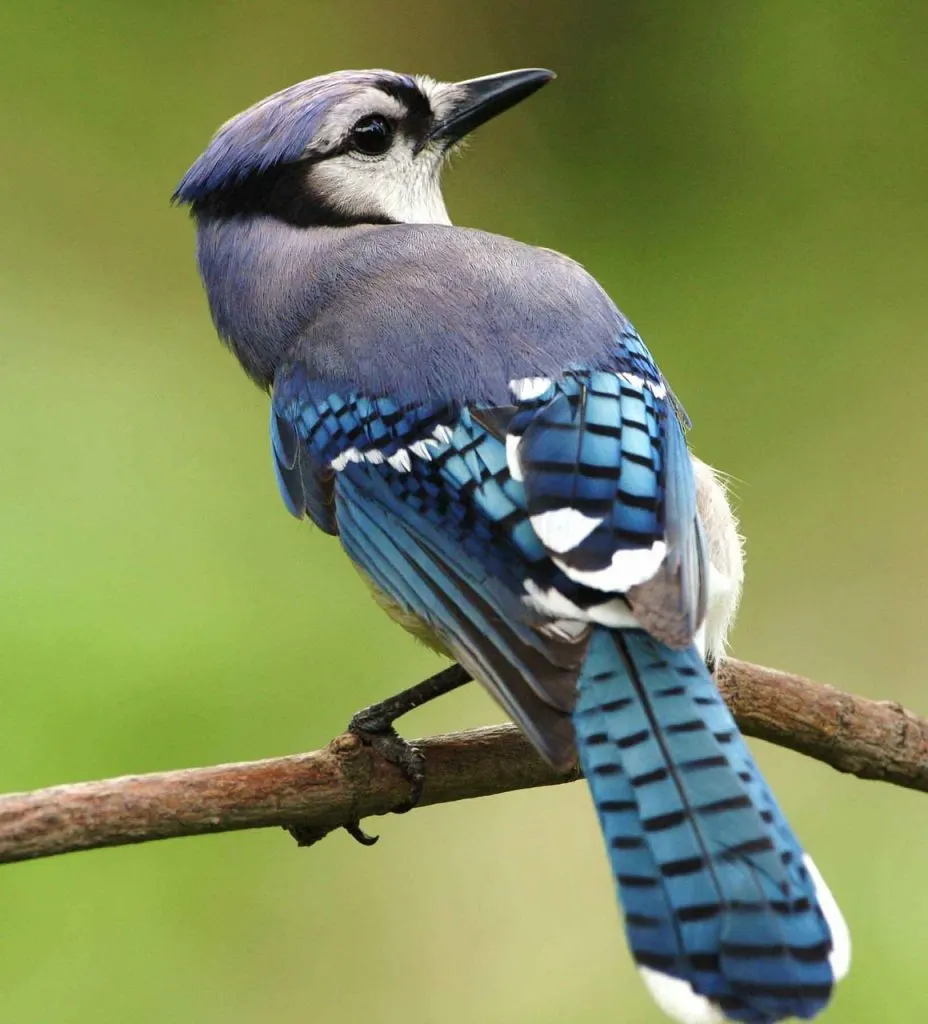Having bird feeders in your yard brings numerous advantages. Watching robins, chickadees, cardinals, and orioles filling up close by is enjoyable.
Yet, if blue jays (Cyanocitta cristata) appear, you might not welcome the same mix of species.

Frequent enough to be the namesake of Toronto’s baseball team, blue jays are widely recognized and spread out. From Canada to the Gulf Coast, and from the Atlantic coast to the Rockies and beyond, blue jays are familiar to Americans and Canadians alike.
Their bold colors make them noticeable among other common bird types.
Sporting black and white stripes on various shades of blue, along with a bright white or gray chest, black facial markings, and a blue crest that gives them a more imposing appearance, these feathered companions are a dazzling sight for those encountering them for the first time.
However, despite their striking appearance, you may not desire to attract them to your yard due to their tendency to be hostile towards other birds, chasing them away.
This member of the crow family, which also includes crows, ravens, and magpies, is as clever and assertive as its relatives.
Blue jays and other corvids are skilled at outsmarting feeders designed to keep them at bay. Their calls are far from melodious, and if a group of blue jays becomes comfortable in your yard, you’re likely to see fewer species around.
Understanding Why Blue Jays Are Viewed Negatively
Alongside brown-headed cowbirds, common grackles, and European starlings, blue jays are regarded as among the top birds you’d rather not see in your yard.
John James Audubon, the ornithologist whose name is synonymous with the highly esteemed Audubon Society, contributed to fostering aversion towards the corvids when he accused blue jays of “selfishness, duplicity, and malice” (according to Audubon).
The birdwatching community has widely embraced this viewpoint, and there are valid reasons for the negative sentiments.
Not only are they common, but they also demand attention—literally—with a loud call and an ability to mimic birds of prey.
These attention-grabbing and highly intelligent birds are captivating to observe. However, if blue jays frequently visit your bird feeders, you may notice fewer other species coming for a meal.
Known for their noisy bullying, blue jays intimidate smaller perching birds with territorial displays and aggression, mimicking the cries of predatory red-shouldered or broad-winged hawks.
This often successfully drives away smaller birds, and with no competition at the feeders, blue jays can consume expensive seed at a rapid rate.
These birds are also notorious for raiding nests. You may catch glimpses of blue wings near backyard nests as the jays feast on other birds’ eggs.
However unpleasant that may sound, such incidents aren’t as frequent as you might imagine. They seldom pilfer eggs and primarily consume greens, fruits, and seeds.
How to Deter Blue Jays From Your Feeders
Suburban yards and mixed wooded areas are ideal habitats for blue jays, while they tend to avoid coniferous forests. Oaks and beeches are the two types of trees most likely to attract blue jays.
If you reside in areas that offer favored habitats for blue jays, don’t lose hope. There are effective methods to discourage them from frequenting your yard without causing harm to them.
The most effective approaches involve selecting appropriate seeds, using cunning feeders, and potentially setting aside a designated habitat for them if you have ample space.
To dissuade blue jays, refrain from offering peanuts, their preferred treat. Instead, you could opt for nyjer seeds, which don’t appeal to jays but entice finches and siskins to your area.
Corvids are skilled at problem-solving, and most “pest-proof” bird feeders are no match for these backyard visitors. However, Droll Yankees’ Whipper feeders, available at Ace Hardware, tend to deter blue jays as well as squirrels and other unwanted guests.
If you’re fortunate enough to have a spacious yard or acreage, you might be able to prevent blue jays from dominating your yard by attracting them to a separate feeding area. Hanging platform feeders are particularly suitable for blue jays.
Choose a spot far from your main feeders, and if you consistently keep the area well-stocked with food and water, this might satisfy them enough to steer clear of your other feeders and feathered companions.
